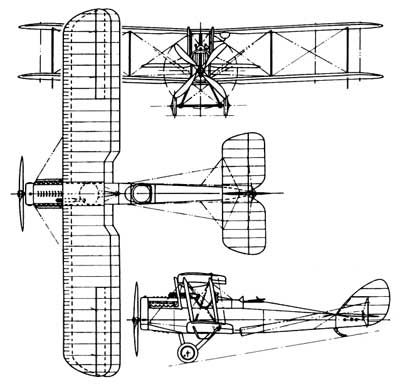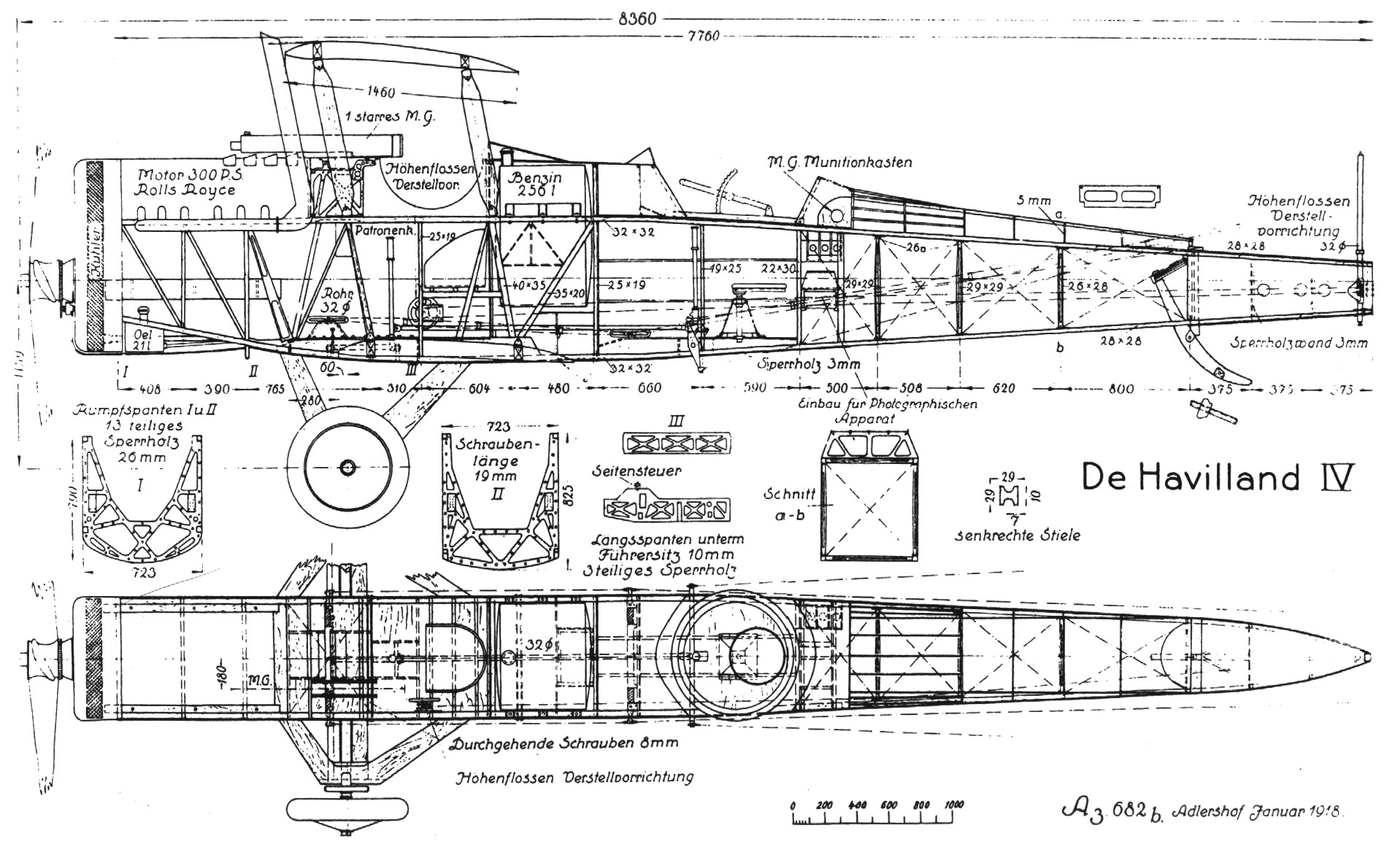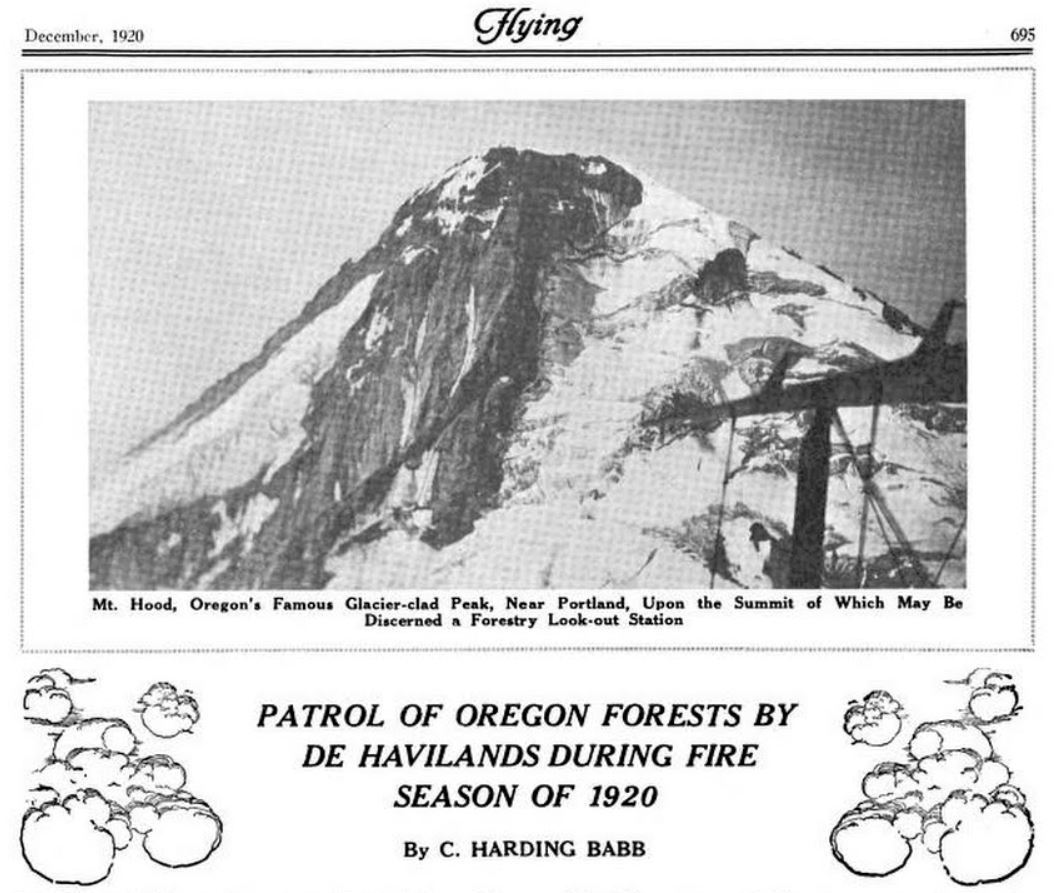
De Havilland 4
http://www.fiddlersgreen.net/models/aircraft/Airco-DH4.html
https://www.worldwar1centennial.org/index.php/dh4-technical-specifications.html
https://aerodynamicmedia.com/friends-of-jenny-dh-4-reveal/
De Havilland 4
| Crew: | 2 | |
|---|---|---|
| Length: | 30 ft 8 in | 9.35 m |
| Wingspan: | 43 ft 4 in | 13.21 m |
| Height: | 11 ft | 3.35 m |
| Wing area: | 434 ft2 | 40 m2 |
| Empty Weight: | 2,387 lb | 1,085 kg |
| Gross weight: | 3,472 lb | 1,578 kg |
| Powerplant: | Liberty V-12 | |
| Performance | ||
| Max Speed: | 143 mph | 230 km/h |
| Range: | 470 miles | 770 km |
| Ceiling: | 22,000 ft | 6,700 m |
| Rate of climb: | 1,000 ft/min | 305 m/min |
| Wing Loading: | 8 lb/ft2 | 39.5 kg/m2 |
| Power/mass: | 0.108 hp/lb | 0.266 kW/kg |
| Climb to 10,000 ft: | 9 min | |

Patrol of Oregon Forests by De Havilands During Fire Season of 1920
By C. Harding Babb
Flying - December, 1920 page 695

The patrol of Oregon forests by De Haviland ships, which closed September 15, 1920, marked the most successful season since the inauguration of an air patrol. The patrol. consisting of about fifteen ships. under the command of Captain Lowell H. Smith, was distributed with a main base at Eugene, Oregon. and sub-bases at Portland, Oregon, and Medford. Oregon, the sub-bases being approximately one hundred and thirty miles north and south of base.
The patrol usually covered the Cascade Mountains on the outgoing trips and came back over the Coast Range Mountains.
During the seventy-seven days it was in operation there were sixty days in which they were able to operate a patrol. During this time seven hundred and twenty tires were discovered. Sixty per cent were reported by radio. the difference of forty per cent being caused by defective radio instruments, interference of one ship with another and static conditions of the air.
The observers were equipped with a complete map of the territory covered and a duplicate wall map in the office upon which all tires were posted, Fires that were burning were distinguished by a red pin, fires that were started by lightning by a yellow pin, fires that had burned out by a black pin. A green pin was used to designate tires reported by lookouts employed by the Forest Service. Saw mills were located by a red square and donkey engines by a red triangle. This means a complete check could be kept on the fire situation.
The Forest Service Department of Agriculture during the year of 1919 spent twelve thousand dollars fighting twenty-three fires in only national forest. During the year of 1920 only two hundred dollars was used in the same National Forest, but it must he said in all justice to the Forest Service, however, that the past season was exceptionally free from dangerous fires because of a wet season.
One of the most remarkable features of the patrol was the fact that during the sixty flying days it operated covering 150,000 miles at an altitude varying from 8,000 to 16,000 feet. over a densely wooded arra where landing fields were few and far between. The season closed with a record of three forced landings and no serious accidents.